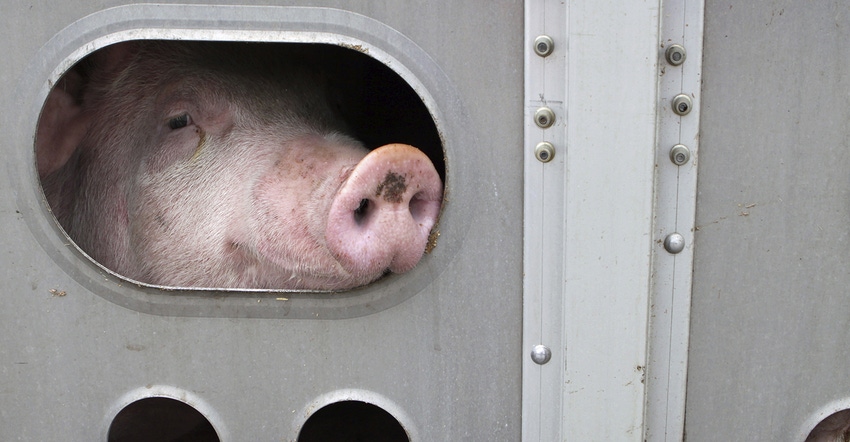European Food Safety Authority outlines mitigation measures.
October 26, 2022

Minimizing transport duration and thoroughly cleaning vehicles, equipment and spaces where animals are loaded and unloaded are some of the measures considered effective in reducing the transmission of resistant bacteria during animal transport.
These are the findings of the European Food Safety Authority's scientific opinion assessing the risk of spread of antimicrobial resistance among poultry, pigs and cattle during transport between farms or to slaughterhouses.
"Despite available data showing a reduction in antibiotic consumption in recent years, antimicrobial resistance remains a pressing public health issue that needs to be tackled at global level and across sectors," said Frank Verdonck, head of EFSA's Biological Hazards and Animal Health and Welfare Unit. "By identifying the main risk factors, mitigation measures and research needs in relation to the transport of animals, EFSA's assessment marks another step forward in the fight against antimicrobial resistance, based on the principle of 'One Health,' which integrates animal and human risk assessment."
The opinion also highlights that appropriate transport organization is key. In addition, any measure improving animal health, welfare and biosecurity immediately before and during transport is very likely to reduce the risk of AMR transmission. The findings of the opinion complement EFSA's recently published recommendations to improve animal welfare during transport.
Main risk factors
The assessment identifies the presence of resistant bacteria in animals before transport as one of the main risk factors contributing to the transmission of antimicrobial resistance. Other risk factors that almost certainly contribute to transmission include increased release of resistant bacteria through feces, exposure to other animals carrying more or different types of resistant bacteria, insufficient hygiene of vehicles and equipment, and the duration of transport.
Long journeys that require rests in assembly centers and control posts are associated with higher risks, due to specific factors such as close contacts with animals from different farms, environmental contamination and stress.
The wider picture: Public health implications
The impact of EFSA's assessment goes beyond animal health and welfare because many bacteria can be transmitted from animals to humans. When these bacteria become resistant to antimicrobials, the effective treatment of infectious diseases in humans can be compromised.
Further research needed
Specific scientific studies on the issue of the spread of AMR among animals during transport are lacking. The opinion maps several data gaps and recommends certain areas where research should focus.
The assessment was requested by the European Parliament's Committee on the Environment, Public Health and Food Safety in September 2021, following discussions on the topic between the European Parliament, the European Commission and EFSA.
Source: EFSA, which is solely responsible for the information provided, and wholly owns the information. Informa Business Media and all its subsidiaries are not responsible for any of the content contained in this information asset.
You May Also Like



